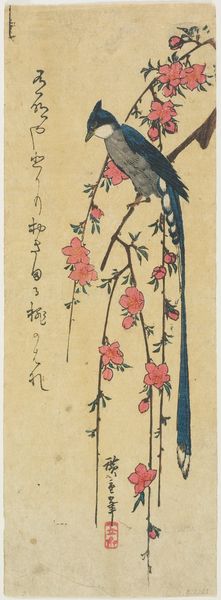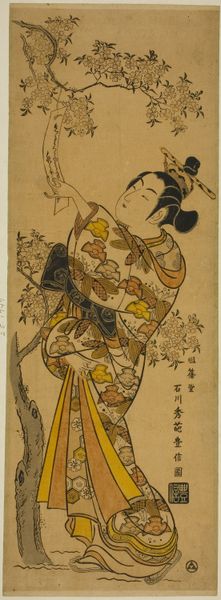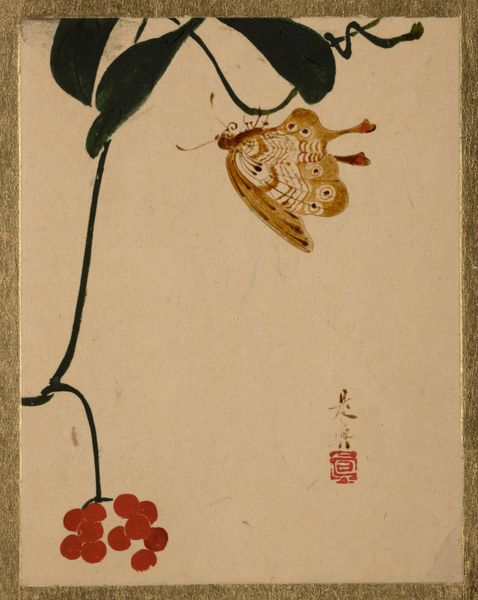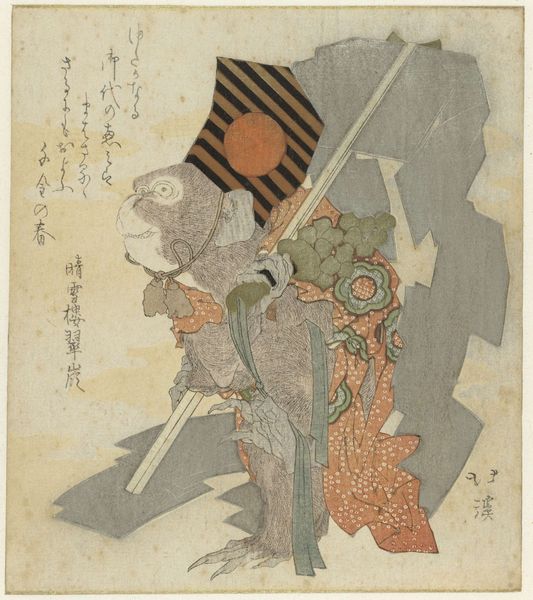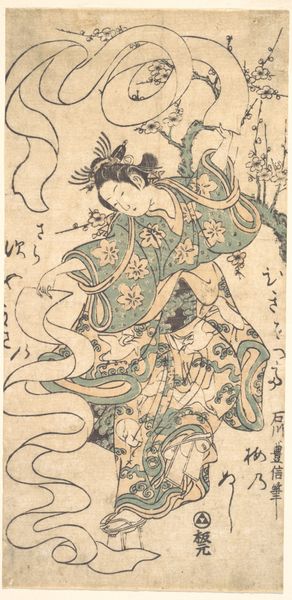
print, ink, woodcut
# print
#
landscape
#
bird
#
ukiyo-e
#
ink
#
woodcut
#
orientalism
Dimensions: 13 5/8 × 4 1/2 in. (34.6 × 11.4 cm) (image, aitanzaku)
Copyright: Public Domain
Editor: Here we have Utagawa Hiroshige’s "Bird on Wisteria Vine," a woodcut print from the 1830s. The bird is so delicately drawn. It seems to be a tranquil observation of nature, but I wonder what lies beneath the surface. How do you interpret this work? Curator: Hiroshige's prints often serve as windows into the Japanese psyche, wouldn't you agree? The wisteria, with its cascading blooms, is laden with symbolism. It represents love, sensuality, but also transience, given the fleeting nature of the blossoms. Editor: I didn't realize wisteria had such a range of symbolic associations. How does the bird play into this? Curator: The bird is the soul, flitting through the ephemeral beauty of life, tethered to it yet free. Look at the angle of its body, diving into the flower. Hiroshige's birds have that quality: always dynamic. Also, note how the calligraphy dances around the composition. Are you aware of its function? Editor: Is that text part of the overall composition? I thought it might be just a signature. Curator: Precisely, a poem enhances the visual narrative and, traditionally, gives context. These little prints create such an emotional response by combining different art forms. It’s not only about portraying reality, but evoking certain moods and feelings. Editor: It is really interesting to consider how much cultural information can be held in an image. Thank you for sharing your expertise, seeing art through symbolic reading offers a fascinating perspective! Curator: Indeed, recognizing symbols allows art to come alive with meanings across cultures and time!
Comments
No comments
Be the first to comment and join the conversation on the ultimate creative platform.

